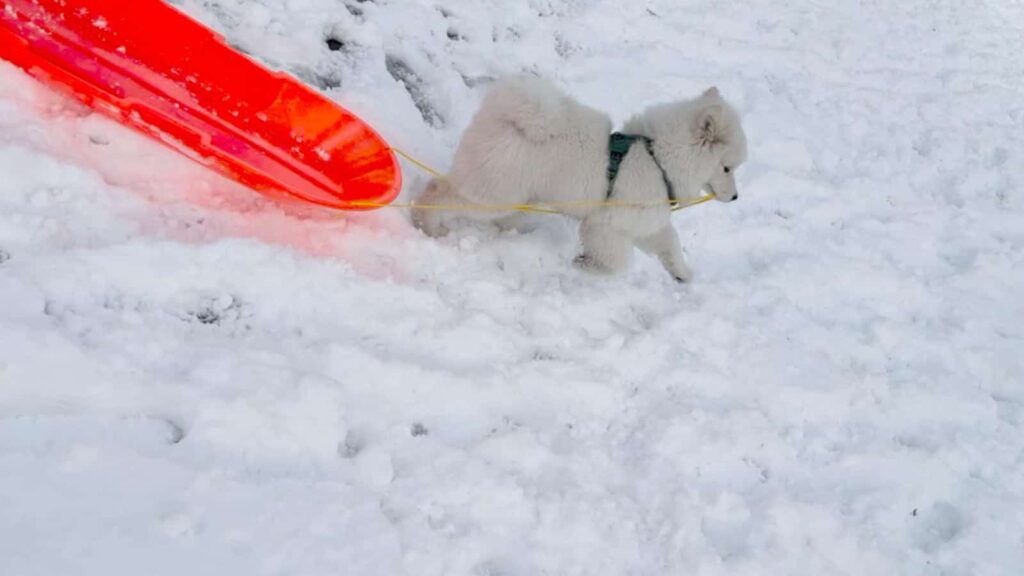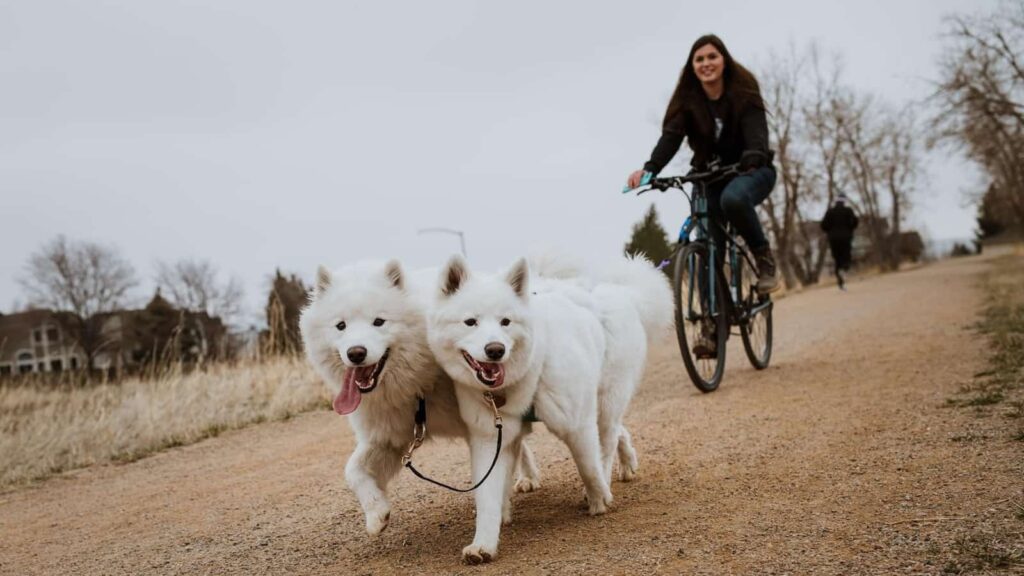The Samoyed is a breed of dog known for its beautiful, fluffy white coat and friendly, playful personality.
With roots dating back to the nomadic Samoyede people of Siberia, the Samoyed has a long and fascinating history that is closely tied to the culture and way of life of these ancient people. From working dogs that helped the Samoyede people survive in the harsh Siberian climate, to beloved show dogs and family pets, the Samoyed has a rich and varied history that is worth exploring.

In this article, we will take a closer look at the history of the Samoyed breed, exploring its origins, evolution, and the important role it has played throughout the centuries.
Disclaimer: This post may contain affiliate links. We only recommend high-quality products that are used and recommended by real owners. If you use these links to buy something we earn a small commission.
Samoyed Dog Breed History (Ancient Roots)
The Samoyed breed can be traced back to 1000 BCE, and over the centuries, it has remained largely unchanged regarding appearance and temperament. The breed takes its name from the Samoyede people, a nomadic tribe that lived in the tundra of northern Russia and Siberia near the Arctic Circle.
The Samoyed is an ancient breed with roots dating back to the nomadic Samoyede people of Siberia. They were a vital part of the Samoyed way of life, and the breed played an important role in the survival of these nomadic people.
These nomadic tribes relied on the Samoyed for a variety of tasks, including:
- Sledding: Samoyed dogs have a strong work ethic and are known for their endurance, making them well-suited for sledding tasks. The breed (known by the Siberian people as Bjelkiers) was originally used by the Samoyed people in Siberia to pull sleds and transport goods across the snowy landscape.
- Herding: Samoyed dogs have a strong herding instinct and are often used to herd reindeer, sheep, and other livestock. The breed is known for its intelligence and trainability, making it well-suited for this type of work.
- Hunting: Samoyed dogs were fierce and fearless. This trait made them excellent at helping the Siberian people hunt bears and other large game.
- Source of warmth in the harsh Siberian climate: Because of their thick, fluffy coats and other physical adaptations, Samoyed dogs can tolerate cold temperatures very well. The Samoyede people in Siberia originally used the breed to help keep their families warm. The dogs would curl up with the people at night, providing warmth and companionship.
The Samoyed was not just a working dog but also a beloved family member. The breed was known for its intelligence, loyalty, and affectionate nature, and it played a crucial role in the social and cultural life of the Samoyede people.

Fun Fact: Samoyed dogs were often given names and treated with great respect, and they were an important source of companionship and comfort for the Samoyede people.
Ancient Samoyed Names
- Nenets: This name means “man” in the Samoyed language and may have been used to reflect the dog’s status as a valued family member.
- Yola: This name means “snow” in the Samoyed language and may have been used to reflect the breed’s white, fluffy coat and its origin in the snowy regions of Siberia.
- Sable: This name refers to the dark, brownish-black color of the sable, a type of marten native to Siberia. It may have been used to reflect the dark coloring of some Samoyed dogs.
- Uyar: This name means “moon” in the Samoyed language and may have been used to reflect the dog’s bright, shining coat and its role as a companion and protector at night.
In the mid-1800s, European polar explorers discovered the Samoyed breed and began incorporating them into their expeditions to the Arctic and Antarctic.
Some of these explorers also brought Samoyed dogs back to Europe, particularly to England. In 1889, British zoologist Ernest Kilburn-Scott spent several months living with the Samoyede people and brought a male puppy back with him to England.
He later imported more Samoyed dogs and is credited with giving the breed its name. The Samoyed quickly gained popularity among the British aristocracy and eventually spread to other parts of the world. The first breed standard for the Samoyed was written in England in 1909.
The Samoyed was not officially recognized as a breed by the American Kennel Club (AKC) until 1906, when it was first entered into the AKC stud book. However, this does not necessarily reflect the start of the breed, as the breed has a long and ancient history that predates its recognition by the AKC.
Quick Fact: In the late 19th century, when the Samoyed was introduced to Europe and quickly gained popularity as a show dog and family pet.
Despite its popularity as a show dog and family pet, the Samoyed has not lost its working dog roots. The breed is still used for herding, sledding, and other working tasks in some parts of the world, and it is known for its intelligence, versatility, and endurance.
Fun Fact: On top of these amazing tasks, Samoyeds have become even more versatile expanding its working resume to these tasks:

- Search and rescue: Samoyed dogs are intelligent and have a strong sense of smell, making them well-suited for search and rescue tasks. They are often used to search for missing persons in rugged terrain or after natural disasters.
- Therapy work: Samoyed dogs are known for their friendly, affectionate nature, and they can make excellent therapy dogs. They are often used to visit hospitals, nursing homes, and other facilities to provide comfort and companionship to those in need.
- Sports: The Samoyed is also a popular breed for dog sports, such as obedience, agility, and tracking. The breed’s intelligence, trainability, and athleticism make it well-suited for these activities, and Samoyeds often excel in dog sports.
- Show dogs: Samoyed dogs are known for their beautiful, fluffy coats and striking appearance, and they are often shown in conformation shows.
Today, the Samoyed is a beloved breed known for its friendly, playful personality and beautiful, fluffy coat. With its long and fascinating history, the Samoyed is a unique and special breed that will bring joy and companionship to any family.



